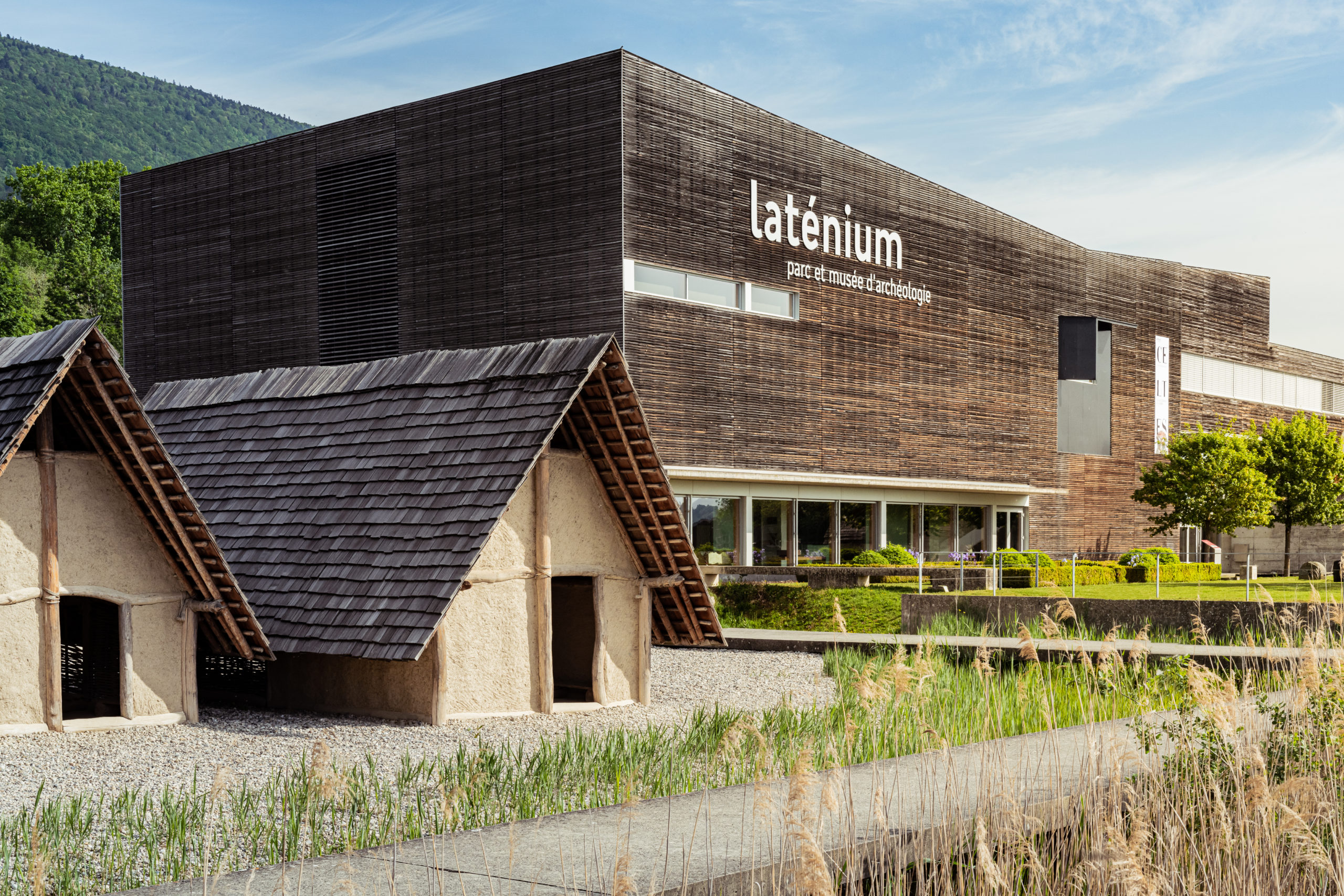Open from 10.00 to 17.00
Open from 10.00 to 17.00
The archaeological park predates the construction of the museum. In the 1990s, the park became the home of the “megablock of Monruz” (an excavated 400-ton block containing a 15,000-year-old hunter-gatherer camp) and a team of specialised craftsmen rebuilt a Bronze Age pile dwelling and a Roman barge. Finally, plant essences were selected to evoke different prehistoric regional landscapes. Other reconstructions have since been added to this “open air museum” that is the archaeological park.


The Laténium park is located in Hauterive-Champréveyres, facing Lake Neuchâtel. Until the late 70s, the area currently occupied by the museum and its park was submerged. Furthermore, this same area has always been known for its archaeological potential (several soundings and an excavation of the site in 1984 to 1986 led to numerous discoveries). However, being underwater, it was never fully explored until the construction of the Swiss A5 Highway began. But due to ongoing work on the portion of highway running next to the museum, the construction of the Laténium itself was only completed several years after the park. Interestingly enough, the construction of the museum and the highway revealed three major archaeological sites: two pile-dweller villages, one dating from the Bronze Age (1056-871 BC), the other one from the Neolithic (3810-3790 BC) and a hunter-gatherer camp dating back to the Magdalenian period (around 13,000 BC). During the 90s, the “megablock of Monruz” (an excavated block weighing over 400 tons and containing the hunter-gatherer camp) was moved into the park, and a team of specialised craftsmen rebuilt a Bronze Age pile dwelleing and a Roman barge.